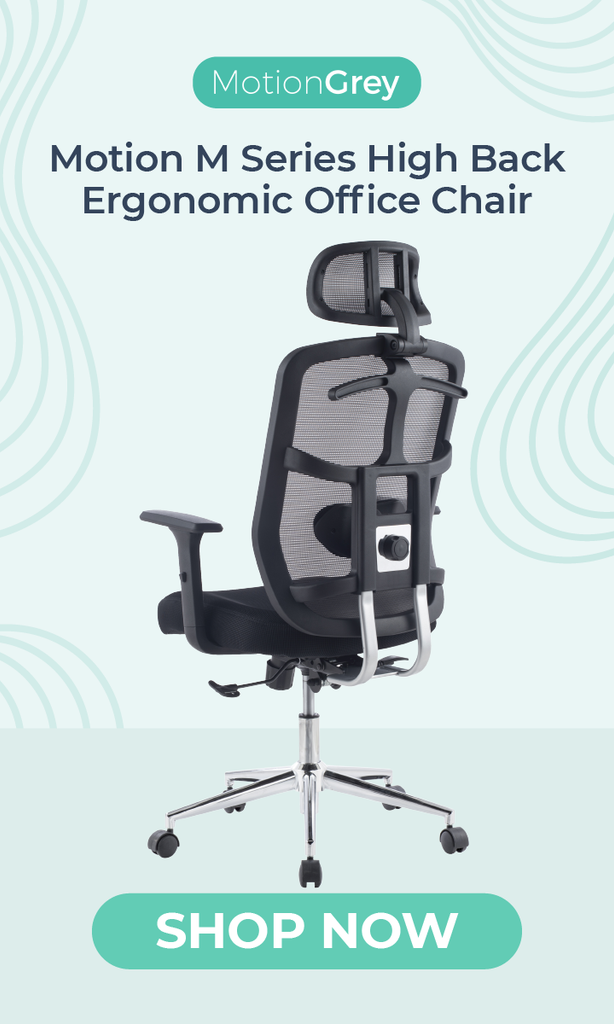Preventing Turtleneck Syndrome: The Ergonomic Approach

In an age where technology dominates our daily lives, the prevalence of musculoskeletal issues has become a growing concern.
One such ailment, often overlooked yet increasingly common, is Turtleneck Syndrome.
This condition, characterized by neck and shoulder strain due to poor posture caused by the overuse of electronic devices, can cause discomfort, pain, and long-term complications if left unchecked.
However, by embracing ergonomic principles in office setups, it’s possible to significantly reduce the risk of Turtleneck Syndrome or fix turtle neck and promote overall well-being in the workplace.
Understanding Turtleneck Syndrome
Turtleneck Syndrome, also known as "text neck" or "tech neck," is a term used to describe the strain and discomfort in the neck and shoulders resulting from prolonged periods of hunching over electronic devices such as smartphones, tablets, or computers. This posture places excessive stress on the spine and surrounding muscles, leading to pain, stiffness, and decreased mobility.
Turtleneck Syndrome in Comparison to Text Neck and Tech Neck
While Turtleneck Syndrome, text neck, and tech neck are often used interchangeably, there are subtle differences worth noting:
- Turtleneck Syndrome: This term specifically refers to the strain and discomfort in the neck and shoulders resulting from prolonged periods of hunching over electronic devices. The condition highlights the resemblance to the posture of a turtle retracting its head into its shell.
- Text Neck: Text neck or text neck syndrome is a broader term that encompasses similar symptoms caused by the repetitive strain of looking down at electronic devices, particularly smartphones, to text or browse the internet. It focuses more on the action of tilting the head forward to view screens.
- Tech Neck: Similar to text neck, tech neck or tech neck syndrome refers to the strain and pain on the neck and shoulders attributed to prolonged use of various technological devices, including smartphones, tablets, and computers. It emphasizes the broader spectrum of devices contributing to the condition.
While these terms may have nuanced differences, they all underscore the detrimental effects of poor posture and excessive device usage on musculoskeletal health. By understanding these distinctions, individuals can better address their ergonomic needs and mitigate the risk of developing these debilitating conditions: turtleneck syndrome, text neck syndrome, or tech neck syndrome.

The Importance of Ergonomics
Ergonomics, the science of designing and arranging objects to optimize human interaction and productivity, plays a crucial role in preventing severe Turtleneck Syndrome. By creating a workspace that supports proper posture and movement, individuals can alleviate the strain on their neck and shoulders and reduce the risk of developing musculoskeletal issues.
Recent studies have highlighted the importance of ergonomics in mitigating the risk of Turtleneck Syndrome or text neck syndrome. A study published in the Journal of Physical Therapy Science found that ergonomic interventions, such as adjusting workstation height and promoting proper posture, significantly reduced neck and shoulder pain in office workers who spent prolonged periods at their desks. Another study published in the International Journal of Environmental Research and Public Health emphasized the role of ergonomic education and training in improving posture and reducing the risk of musculoskeletal disorders associated with prolonged sitting and screen use.
Ergonomic Office Setups
With ergonomics playing a key role, there are several ergonomic elements that you can consider in your space to address turtleneck syndrome. Take a look at the following:
Adjustable Standing Desks
Incorporating adjustable standing desks into the workspace allows individuals to alternate between sitting and standing positions throughout the day. Standing desks promote better posture by encouraging users to maintain a more upright position, reducing the likelihood of slouching and neck strain and preventing severe turtle neck syndrome.
Supportive Ergonomic Chairs
Investing in supportive ergonomic chairs with adjustable lumbar support, armrests, and adjustable seat height can greatly enhance comfort and reduce the risk of Turtleneck Syndrome or text neck syndrome. These chairs encourage proper spinal alignment and provide adequate support to the lower back, shoulders, and neck, minimizing the strain caused by prolonged sitting to prevent severe turtle neck syndrome.

Monitor Positioning
The positioning of computer monitors is crucial in reducing neck strain and preventing severe turtle neck syndrome. Follow these guidelines for optimal monitor placement:
- Position the monitor directly in front of you at arm's length away.
- Adjust the height of the monitor so that the top of the screen is at or just below eye level.
- Tilt the monitor slightly upward to minimize the need for tilting the head forward.
Keyboard and Mouse Placement
The placement of the keyboard and mouse also plays a significant role in promoting ergonomic comfort and preventing severe turtle neck syndrome:
- Keep the keyboard and mouse close to the body, with the elbows bent at a 90-degree angle.
- Maintain a relaxed and neutral wrist position while typing or using the mouse.
- Consider using ergonomic keyboards and mice designed to reduce strain on the wrists and forearms.
Proper Posture
Maintaining proper posture is essential in preventing severe turtle neck syndrome. Whether sitting or standing, remember to:
- Keep your spine aligned in a neutral position, with the ears aligned over the shoulders and the shoulders relaxed.
- Avoid slouching or leaning forward excessively, as this places undue stress on the neck and shoulders.
- Keep the chin parallel to the ground, avoiding excessive tilting or downward gaze.
 Turtleneck Syndrome or text neck syndrome poses a significant risk to individuals who spend extended periods using electronic devices. However, by adopting an ergonomic approach to office setups and prioritizing proper posture, monitor positioning, and keyboard/mouse placement, it is possible to mitigate the risk of developing this debilitating condition. Investing in adjustable standing desks, supportive ergonomic chairs, and ergonomic accessories can go a long way in promoting musculoskeletal health and overall well-being in the modern workplace to prevent severe turtle neck syndrome.
Turtleneck Syndrome or text neck syndrome poses a significant risk to individuals who spend extended periods using electronic devices. However, by adopting an ergonomic approach to office setups and prioritizing proper posture, monitor positioning, and keyboard/mouse placement, it is possible to mitigate the risk of developing this debilitating condition. Investing in adjustable standing desks, supportive ergonomic chairs, and ergonomic accessories can go a long way in promoting musculoskeletal health and overall well-being in the modern workplace to prevent severe turtle neck syndrome.
Take a moment to assess your work environment. Are your workstation and habits conducive to good posture and musculoskeletal health? Consider implementing the ergonomic principles outlined in this blog post and making adjustments where necessary. Remember, small changes can have a big impact on your well-being over time.
Let's prioritize ergonomics not only for our immediate comfort but also for our long-term health. By doing so, we not only create a more comfortable and productive work environment but also safeguard our health for years to come. Together, let's strive to make ergonomics a cornerstone of every workplace, ensuring that we can all thrive in our professional pursuits while prioritizing our physical well-being.
About Us
MotionGrey is a Canadian standing desk company that specializes in ergonomic furniture. We supply and install only the best quality standing desks and ergonomic chairs in the country. We offer free shipping within Canada and the US.
What made you switch to standing desks? Our products are designed with wellness as the focal point. From our electric standing desks to our office and gaming chairs, we deliver best value by putting your health, safety, and comfort as top priority. Boost your creativity and level up work performance. We want you to create great outcomes so we’re providing you only the best tools to make them possible.
If you are not satisfied with your purchase, check out our Refund Policy.





